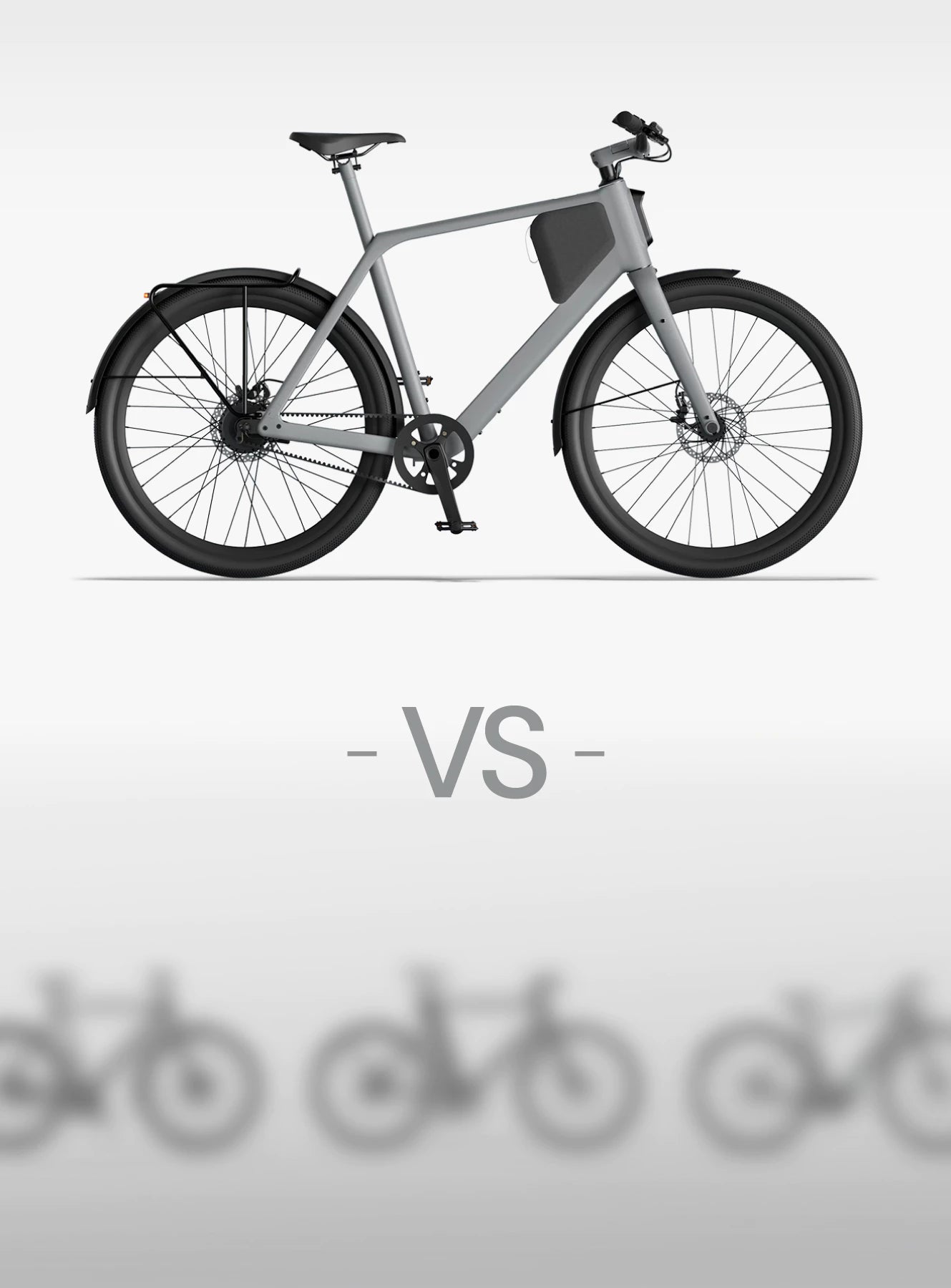The main difference between e-bikes and "traditional" bicycles lies in the propulsion system: electric bikes are equipped with a motor. To supply it with sufficient power, every e-bike comes with a battery. With a fully charged battery, you can ride for hours until it's time to recharge. After all, without a charged battery, there's no ride.

However, charging the battery requires some considerations to avoid compromising its performance. In this article, we will delve into this topic, providing insights into proper care and alternative charging options for e-bikes.
Definition, Function, and Types of E-Bike Batteries
The e-bike battery is the heart of an electric bicycle. It supplies the motor with the necessary energy to drive the wheels. Essentially, the battery converts electrical energy into kinetic energy to provide the rider with additional propulsion.

Types of E-Bike Batteries
Lithium-ion batteries: These batteries are lightweight, have high capacity, and offer a longer lifespan. They are the most common choice for modern e-bikes.
Nickel-metal hydride batteries: Though less commonly used, they are an older technology with slightly lower performance compared to lithium-ion batteries.
Lead-acid batteries: These are heavier and have a shorter lifespan. They are used in older e-bike models.
Sodium-ion batteries: Still in the developmental phase, they promise high energy density and low costs but could be future options.
Charging an E-Bike with Another E-Bike Battery:
The idea of charging an e-bike with another e-bike battery may seem innovative at first glance, but its practicality depends on several technical factors. Let's explore the feasibility, advantages and disadvantages, as well as the crucial safety aspects of this approach.
Feasibility and Technical Considerations

Advantages and Disadvantages
This method offers potential benefits such as extended range, especially when conventional charging options are unavailable. On the other hand, potential drawbacks need to be considered. These include the risk of battery damage due to incorrect application and the necessity of thoroughly understanding the technical details of the batteries involved.
Safety Precautions
Handling batteries requires utmost caution. To ensure a safe charging process, safety precautions must be taken. These include monitoring voltage differences between the batteries, avoiding overheating, and adhering to recommended charging cycles. Unauthorized modifications to the batteries should be avoided to minimize potential risks.
Overall, charging an e-bike with another e-bike battery is technically possible but requires careful consideration and adherence to safety guidelines. It is recommended to consider alternative charging options such as portable chargers or public charging stations to ensure safe and efficient power supply.
Alternative Charging Options
While charging from e-bike to e-bike poses challenges, there are several alternative methods to effectively charge your e-bike:
Portable chargers and power banks
Explore the convenience of portable chargers and power banks specifically designed for e-bikes, offering flexibility during your rides.

Charging stations and public outlets
Public charging stations are becoming more widespread. We discuss how to find them and consider considerations when using conventional power outlets.
Solar charging options
Harness the power of the sun with solar-powered solutions. We explore solar panels designed for e-bikes and their practicality.
In summary, the idea of charging an e-bike with another e-bike battery is fascinating but not without complexities. Understanding feasibility, considering the pros and cons, and exploring alternative charging methods enable e-bike enthusiasts to make informed decisions about powering their vehicles.








